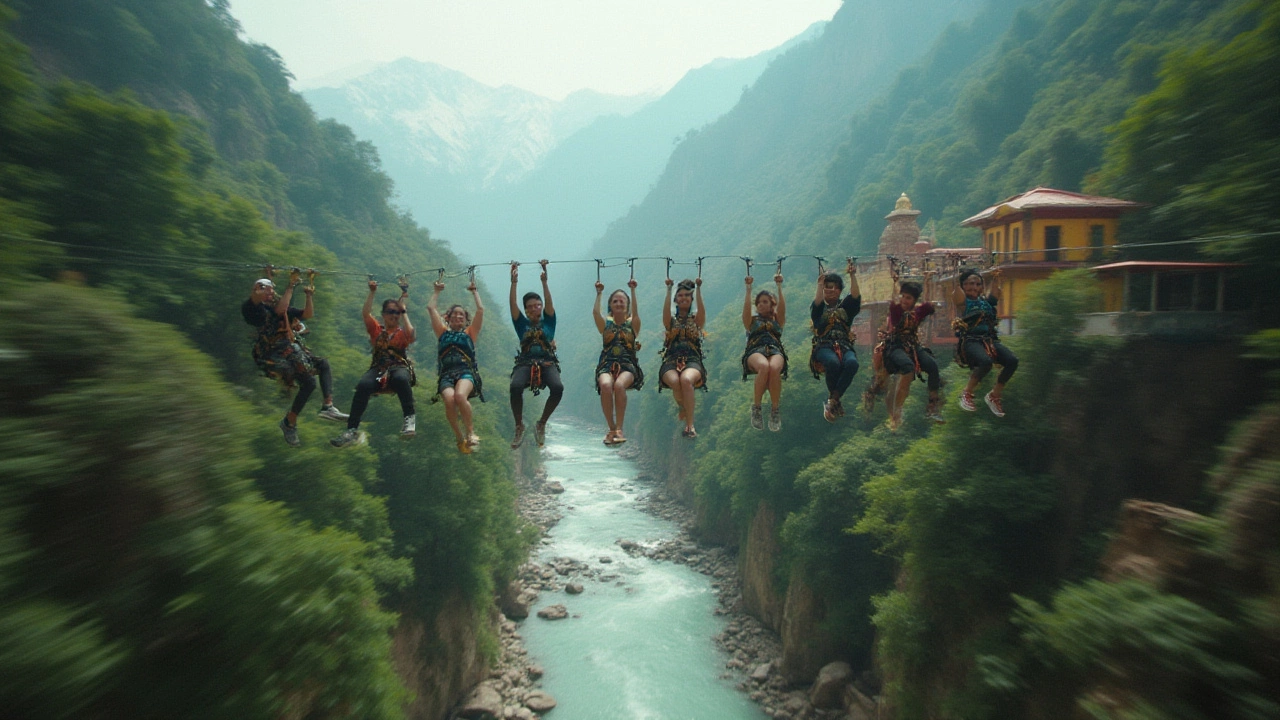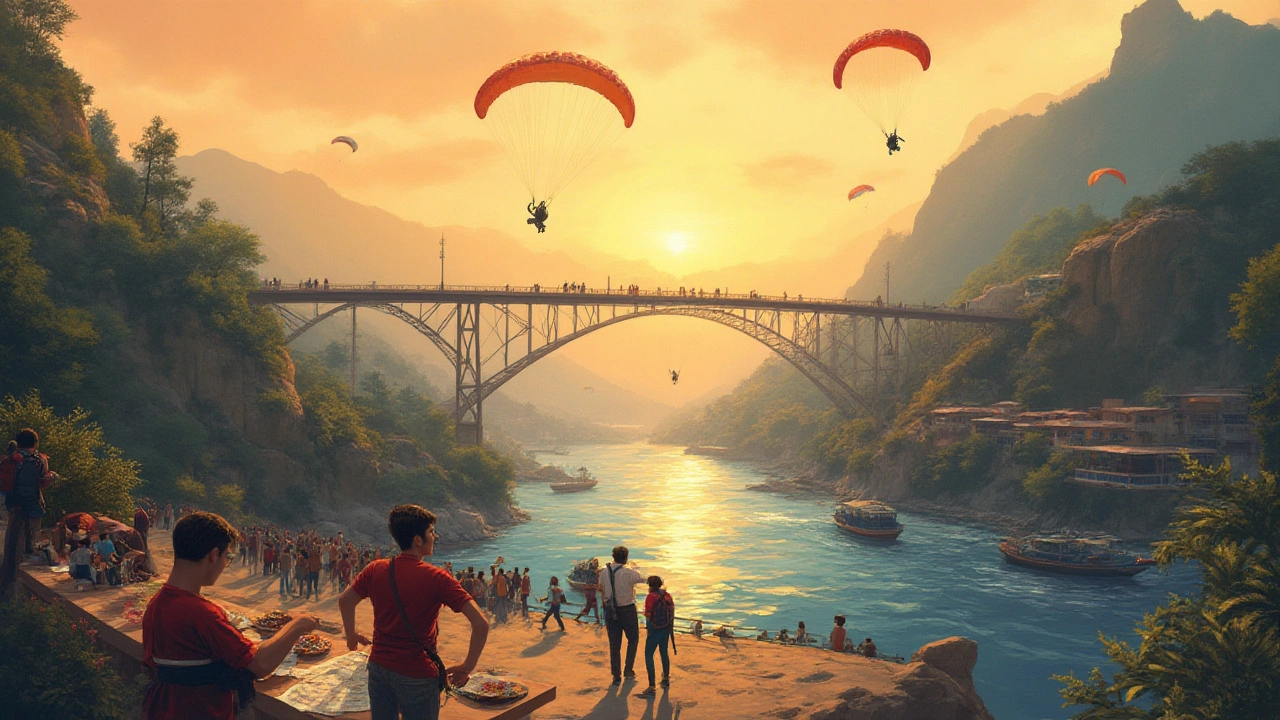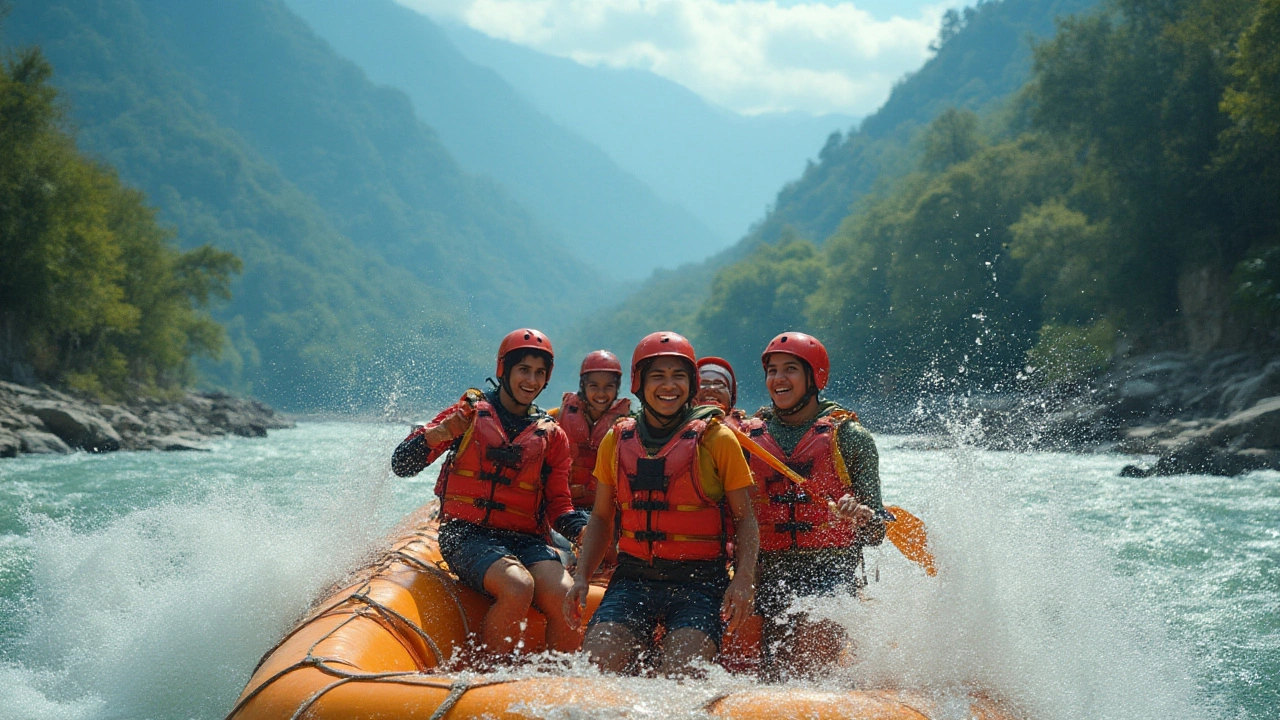No city in India pulls the adrenaline junkies quite like Rishikesh. The Ganges slicing through emerald valleys, dizzying cliff faces, and a wild culture where risk feels like a way of life—it’s no surprise thrill-seekers from all over keep flocking here. While Manali and Goa try to snag the limelight, Rishikesh stands untamed, practical, and absolutely unbeatable for adventure tourism. Why? People don’t just visit for yoga anymore. They come to jump off bridges, paddle through rapids, and zipline over canyons, all with sacred temples just a stone’s throw away. It’s this crazy blend of raw nature and pure thrill that makes Rishikesh impossible to ignore.
The Rise of Rishikesh: How a Spiritual Hub Became India’s Adventure Playground
Back in the day, Rishikesh had a totally different rep. Think peaceful ghats, monks, meditation, and soul-searchers from across the globe chilling on the banks of the Ganges. But something electric happened over the past twenty years. With the Ganga’s natural rapids nearby, pioneers started experimenting with white water rafting in the early 2000s. The combo of wild water, easy transport links from Delhi, and rugged Himalayan topography put Rishikesh on the extreme sports map. By 2010, tour operators noticed crowds getting bigger and more international—weekenders from Mumbai mingling with Australian backpackers and London professionals all here for a rush. The government got in on the action too, setting up strict safety protocols and certified guides after an initial surge in homegrown adventure companies.
Today, Rishikesh is India’s certified ‘adventure sports capital.’ That’s not just local hype. In 2023, the Uttarakhand Tourism Department recorded more than 250,000 tourists booking an adventure activity in Rishikesh alone—a jump of over 45% from just four years ago. The city also scores highest across India for the number of annual bungee jumps and river rafting trips sold.
"No other destination in India matches Rishikesh for both the variety of experiences and the sheer number of people trying them," says Rohit Shandilya, a senior adventure tourism consultant working with Uttarakhand since 2017.The result? Rishikesh hasn’t just kept pace with world capitals for adventure—it’s set a record-breaking pace of its own.
But the transformation isn’t just about numbers. Locals have thrived. Over 100 small adventure outfits have opened between Tapovan and Shivpuri. Training centers have sprung up to teach kids in nearby villages the ropes—quite literally in some cases. Women run several of the most popular kayaking and climbing schools, making the scene here unusually inclusive. With this level of energy pulsing through the city, Rishikesh keeps outpacing other Indian destinations long after the first thrill-chasing visitors arrived.

Top Adventure Sports That Made Rishikesh the Capital of Thrill
The heart of Rishikesh’s wild reputation is its sheer range of hardcore activities—most within an hour’s drive. First up: white water rafting. The river has a stretch with Class III and IV rapids that’ll pin you to your seat (or send you flying, if you’re not careful). The 16km stretch from Shivpuri to Lakshman Jhula is the most famous—paddle through rollercoaster rapids like ‘The Wall,’ ‘Return to Sender,’ and ‘Roller Coaster.’ Want something shorter or beginner-friendly? Try smaller runs from Brahmpuri for gentler waves and a scenic float.
Now, here’s where Rishikesh flexes its muscle: bungee jumping. Standing on the edge of India’s highest fixed platform—83 meters high—your stomach does flips before you even jump. The bungee platform here, run by ex-New Zealand professionals, meets global safety standards. They’ve recorded over 80,000 jumps since 2017 with a stellar safety record.
But why stop at jumping? Ziplining over the raging river is another must-do. The 650-meter zip across the Ganga’s gorge is insane for speed-demons—you’ll hit 70kph in seconds. Besides speed, it’s that rush of flying above forests and water that sticks with people. And don’t ignore rock climbing, rappelling, and cliff jumping sessions—plenty of natural limestone crags around Rishikesh make for perfect practice grounds.
Rishikesh has even shaped India’s competitive kayaking and stand-up paddleboard scene. Grand Ganga River festivals every October see Indian and international teams battle epic waves, judging feats of balance, speed, style. Fans line the banks, local food stalls turn it into a street party, and riverfront camping buzzes through sunrise.
Don’t just take my word—here are some real stats to size up the scene:
| Activity | Number of Annual Participants | Unique Feature |
|---|---|---|
| White Water Rafting | 160,000+ | 16km, Class III/IV rapids |
| Bungee Jumping | 30,000+ | India’s highest platform (83m) |
| Ziplining | 7,000+ | Longest zip above Ganges (650m) |
| Kayaking/Stand-up Paddle | 8,000+ | National river fests |
While other places—think Manali for skiing, Andaman for scuba—hold their own, nowhere else delivers this head-spinning mix within such a compact area. If you want high-altitude trekking, Uttarkashi or Ladakh might win for snow, but for year-round action that covers water, air, and rock, Rishikesh sits alone at the top.

Tips, Facts, and Planning: How to Get the Most Out of India’s Adventure Headquarters
If you’re ready to join the thrill ride, don’t just land in Rishikesh and hope for the best. Start with the right time: March to June and September to early November bring the best weather. Monsoon (July-August) can make river rafting gutsy but riskier—a lot of operators pause during heavy rains, so check in advance. Winter (December-February) is awesome for crowds but gets chilly, especially on the water, so prep your gear accordingly.
Safety isn’t a joke here. Stick to agencies with certified instructors—look for Uttarakhand Tourism approval or IRF (International Rafting Federation) accreditation for rafting. Most bungee and zipline companies publish their safety regs right at the counter—don’t be shy about asking for their records and insurance. First-timers: listen, always gear up, and never pull stunts alone.
Crowds peak from late April through June. If you hate lines, visit in March or post-monsoon in early September—you’ll find guides with more time and less frantic groups. And don’t get tricked by ultra-cheap rates on the street; recognized operators charge a bit more for a reason. If you want to save, book combo packages—say rafting and cliff jumping together—or come mid-week for lower prices.
Beyond the big-ticket adrenaline events, heap on the extras. Try guided forest hikes above the town—locals know secret waterfalls and sunset spots. Visit ghat aarti ceremonies to see a completely different side of Rishikesh—spiritual, glowing, yet buzzing with the same energy as the rapids. Evenings are great for unwinding in cafes that spill onto the street with their famous lemon ginger honey teas and endless stories from the day’s adventures.
Packing is dead simple: quick-dry clothes, sturdy trek shoes, sunscreen, waterproof phone cases, and a GoPro if you want to relive the action. Most gear like helmets, jackets, or harnesses come as part of your package, but bring your own if you’re particular about fit or hygiene. Oh, and cash helps at smaller places—cards work, but electricity can be patchy after a wild Himalayan storm.
What really stands out in Rishikesh is who you’ll meet. Students, groups, families, lone-wolf wanderers, and couples from every part of India—and a surprising number of international faces—form this real-life adventure tribe. If you’re shy, join up with a group package; guides love mixing up solo visitors and breaking the ice. In between, pool stories at riverside shacks—sometimes, that’s how you find your next daredevil activity or make friends for keeps.
It’s pretty easy to reach. Direct trains and buses land you in the city, and airport taxis from Dehradun cost less than you’d expect. Inside town, tuk-tuks and apps like Ola handle short hops, but for river stretches some camps do free pickups. If you need a digital detox, just stay at an off-grid riverside camp—some have no signal, all have stars bigger than you’ll ever see in a city.
That’s what makes Rishikesh adventure sports so addictive: it fuses nature, challenge, and freedom in a way maybe only New Zealand or Nepal can match. But here, you get it all with hot masala chai, the world’s friendliest hosts, and the soft chant of the Ganga in the background. Dive into the action, and it might just change the way you see yourself—or adventure itself.
